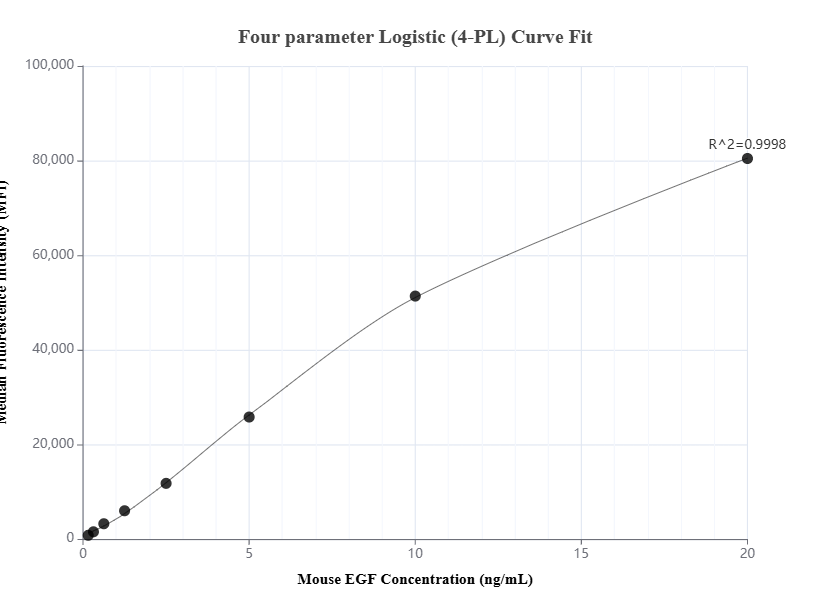验证数据展示
产品信息
84601-1-PBS targets EGF as part of a matched antibody pair:
MP01451-1: 84601-1-PBS capture and 84601-2-PBS detection (validated in Cytometric bead array)
Unconjugated rabbit recombinant monoclonal antibody in PBS only (BSA and azide free) storage buffer at a concentration of 1 mg/mL, ready for conjugation. Created using Proteintech’s proprietary in-house recombinant technology. Recombinant production enables unrivalled batch-to-batch consistency, easy scale-up, and future security of supply.
This conjugation ready format makes antibodies ideal for use in many applications including: ELISAs, multiplex assays requiring matched pairs, mass cytometry, and multiplex imaging applications.Antibody use should be optimized by the end user for each application and assay.
| 经测试应用 | WB, IHC, Cytometric bead array, Indirect ELISA Application Description |
| 经测试反应性 | mouse |
| 免疫原 | Recombinant protein 种属同源性预测 |
| 宿主/亚型 | Rabbit / IgG |
| 抗体类别 | Recombinant |
| 产品类型 | Antibody |
| 全称 | epidermal growth factor |
| 别名 | Pro-epidermal growth factor, Epidermal growth factor, 242000B1 |
| 计算分子量 | 133 kDa |
| 观测分子量 | 150 kDa |
| GenBank蛋白编号 | NM_010113 |
| 基因名称 | Egf |
| Gene ID (NCBI) | 13645 |
| 偶联类型 | Unconjugated |
| 形式 | Liquid |
| 纯化方式 | Protein A purification |
| UNIPROT ID | P01132 |
| 储存缓冲液 | PBS only , pH 7.3 |
| 储存条件 | Store at -80°C. The product is shipped with ice packs. Upon receipt, store it immediately at -80°C |
背景介绍
Epidermal Growth Factor (EGF) is a type of mitogenic factor that stimulates the proliferation of various cells, including epithelial cells and fibroblasts. It is a small peptide composed of 53 amino acids with a molecular weight of approximately 6,000 Daltons. EGF contains three disulfide bonds, which contribute to its stability under acidic and high-temperature conditions. Human EGF is synthesized as transmembrane precursor proteins (1207 amino acids), which are proteolytically cleaved to generate the 54 amino acid mature EGF. EGF plays a crucial role in regulating cell growth, proliferation, and differentiation. When EGF binds to its receptor (EGFR), it activates intracellular signaling pathways that lead to DNA synthesis and cell proliferation. EGF is naturally present in various tissues and body fluids, including saliva, urine, and milk. It is primarily synthesized in the submandibular glands and duodenum.



